
The United States has always emphasized science and technology education and students’ practical abilities. It is no wonder that Science, Technology, Engineering, and Mathematics (STEM) education has caught the country’s attention in recent years, and even been elevated to being the national strategy. What is so special about STEM education? To what extent has U.S. STEM education been developed? What teaching materials are being used? And how can educators graft its essence into the curriculum system for Chinese children? Recently, a seminar on American education was held at Kaiwen Academy (Haidian), which attracted hundreds of well-known international educators.
On March 23, 2017, the Seminar on U.S. Science Class and NGSS and STEM Education, sponsored by the Houghton Mifflin Harcourt (HMH) Publishing Group, was held at Kaiwen Academy (Haidian). The seminar was scheduled to be held in Xi’an, Beijing, Shenzhen, and Shanghai. Kaiwen Academy (Haidian) is the only organizer for the Beijing leg.
More than 160 science teachers from nearly 40 international and private bilingual schools, including branches of Tsinghua University High School, the Second High School Attached to Beijing Normal University, Beijing Lu He High School, Beijing Saint Paul American School, and Beijing No.35 High School, attended the seminar. Kaiwen science teachers, led by Sun Chao, director of the science subject, also participated in the meeting.
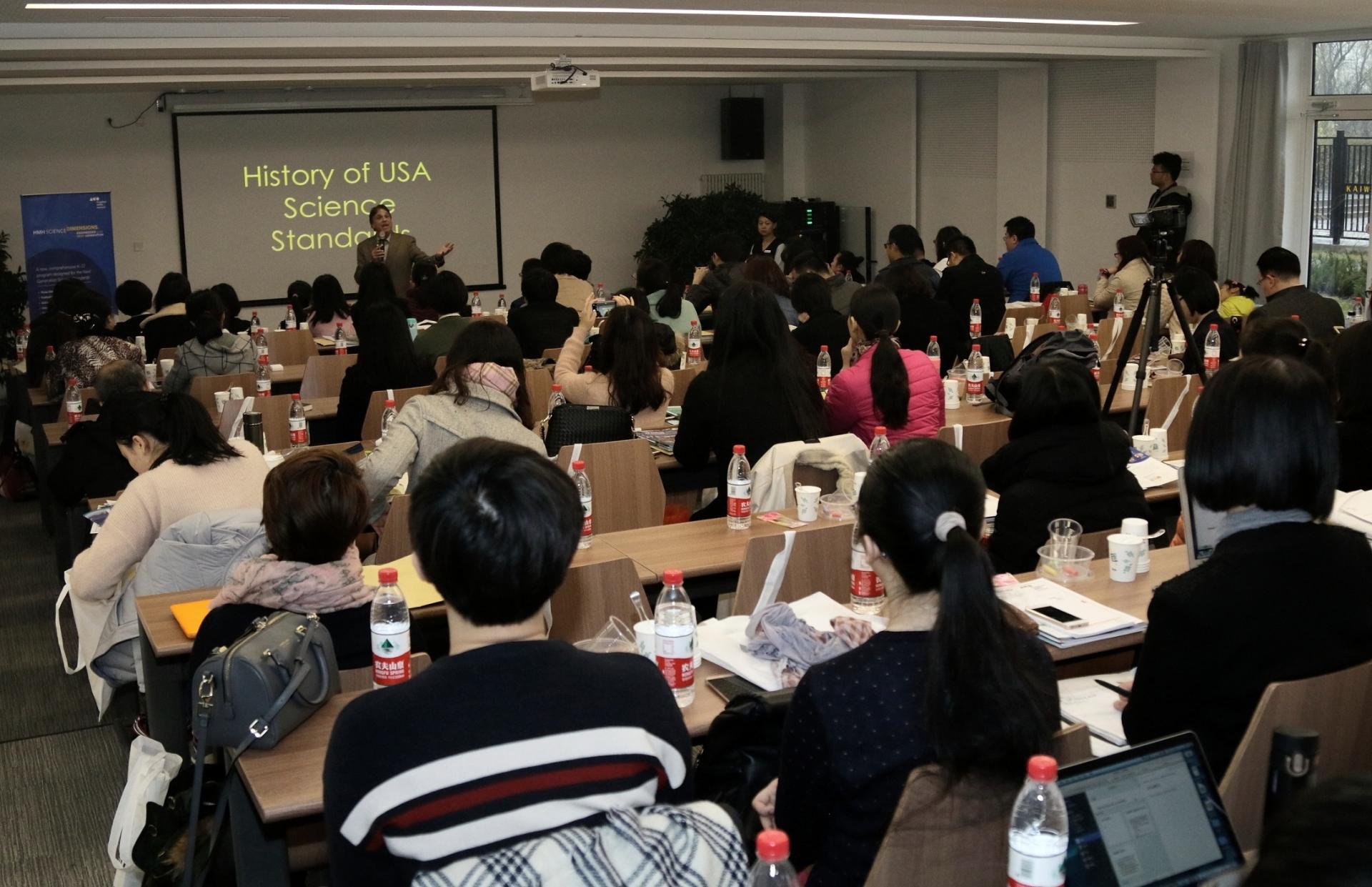
The seminar site is packed.
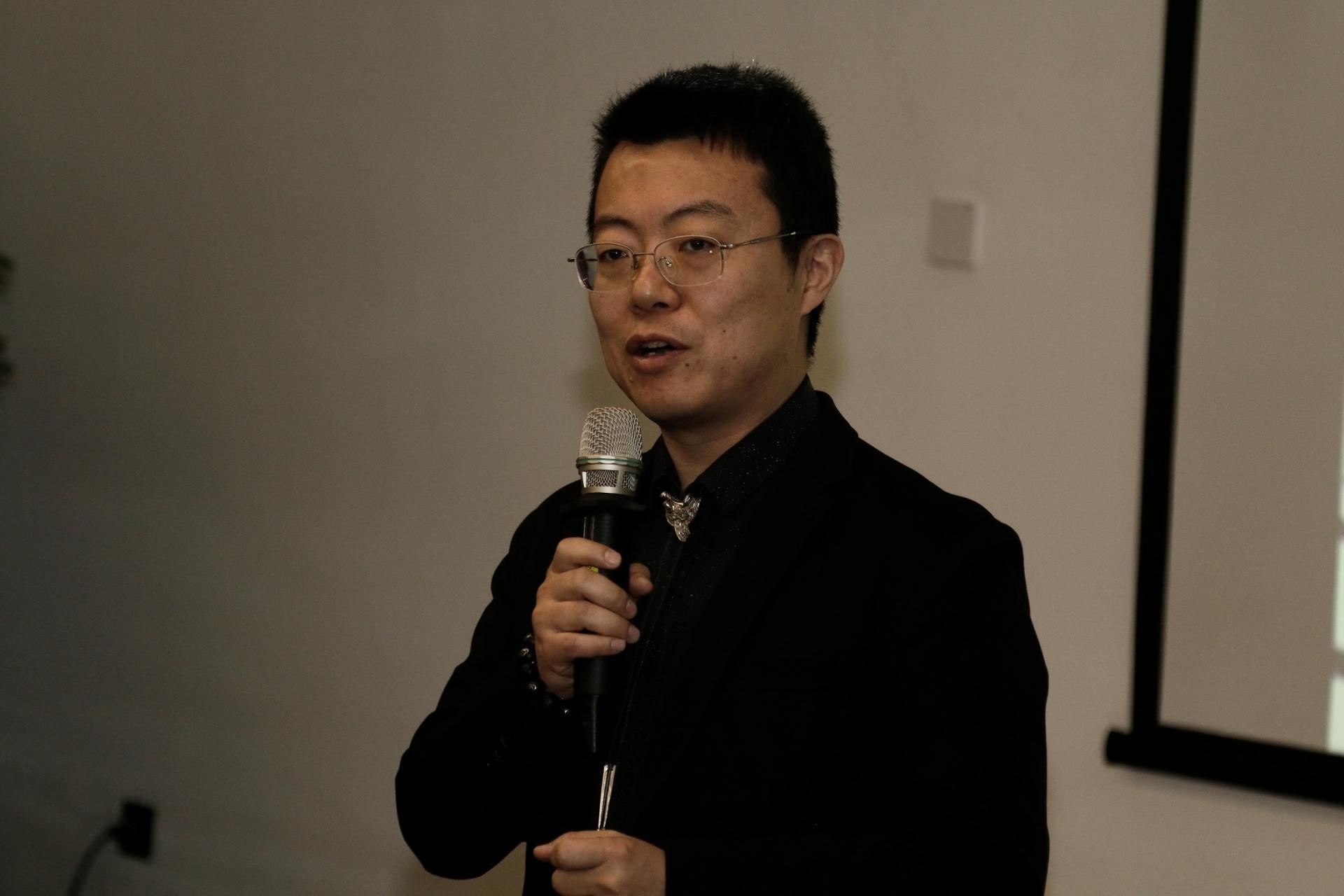
Mr. Wang Shi, academic principal of Kaiwen Academy (Haidian), makes a speech.
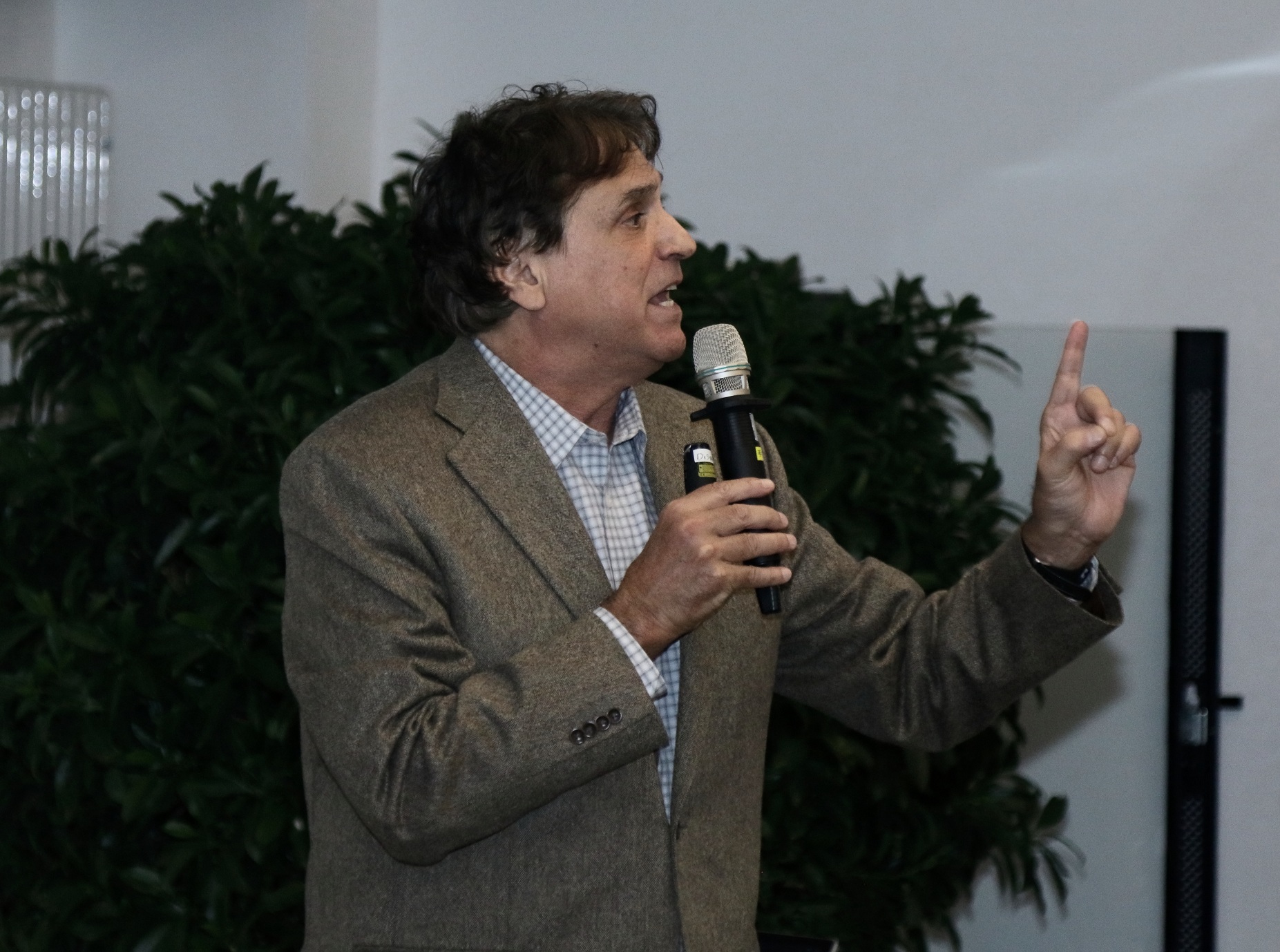
Mr. Michael DiSpezio, a world-renowned expert in science education
Mr. Michael DiSpezio introduced the latest and most effective teaching method in the United States today—STEM education. Unlike large-scale basic courses, STEM education “teaches one to fish.” It allows students to be exposed to a problem-solving methodology from the beginning of their primary school days. Teachers make appropriate guidance based on the students’ interests and cognitive levels. STEM education is to train future leaders in the scientific and technology communities.
At the seminar, Mr. Michael DiSpezio analyzed the characteristics and existing problems of the American National Science Education Standards. He introduced the Next Generation Science Standards (NGSS) and then expounded on the three dimensions of the standards—science and engineering practices, disciplinary core ideas, and crosscutting concepts/big ideas.
Building on the discussion of STEM education, the seminar also focused on the concept of STEAM (Science, Technology, Engineering, the Arts and Mathematics) education. Different from the traditional single-discipline and book learning-based education, STEAM education embodies a transdisciplinary educational concept that uses the Arts to make more real-life connections. We cannot succeed in anything with only a single ability. For example, the manufacturing of high-tech electronic products entails not only high-tech for innovative features, but also artistic design for a good-looking appearance. For the future, we need talented personnel with comprehensive abilities.
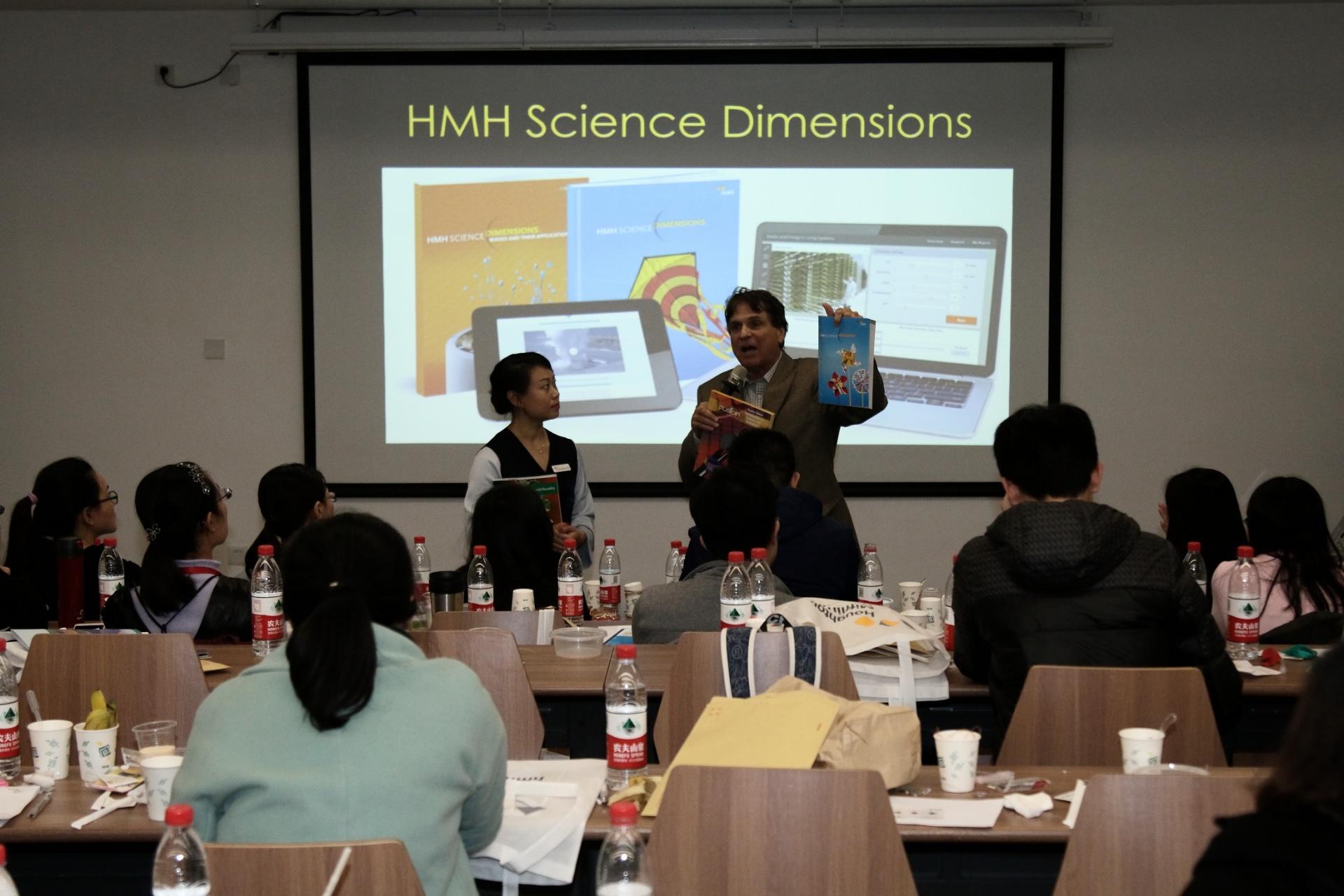
Mr. DiSpezio presents the HMH-published science textbooks to teachers.
At the seminar, Mr. DiSpezio talked in detail about “project-based learning.” He advocates personal, hands-on experience for the teachers so that they will do the same with their students when imparting knowledge to them. He thinks that students should be allowed to independently explore the unknown world, which will stimulate students’ interest in learning, and enable them to apply what they have learned in their everyday lives.
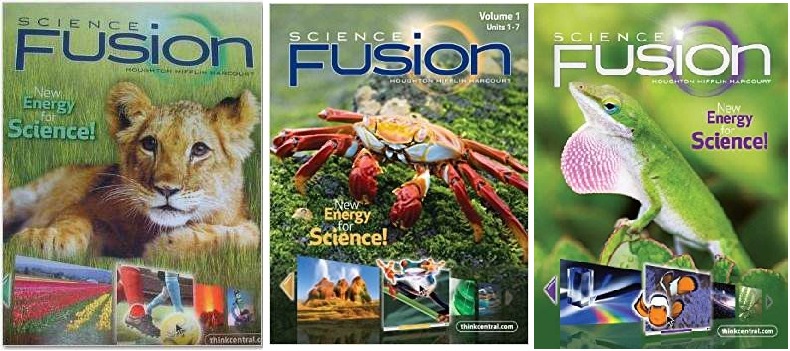
Science Fusion by one of the compilers Mr DiSpezio
Mr. DiSpezio is one of the compilers of Science Fusion, the supplementary science textbook that Kaiwen Academy (Haidian) currently uses for its primary and junior high school students. The textbook has incorporated the NGSS concept, and is widely used in schools in the United States. A full set of the English version of these supplementary materials includes a textbook and an exercise book. Considering the needs of non-native English learners, the compilers have especially stressed the scientific vocabulary and visual learning when compiling the textbook. The textbook, while ensuring that students will master a large number of scientific vocabulary words, will help the students think critically and evaluate and question what they are learning through practical activities and panel discussions.
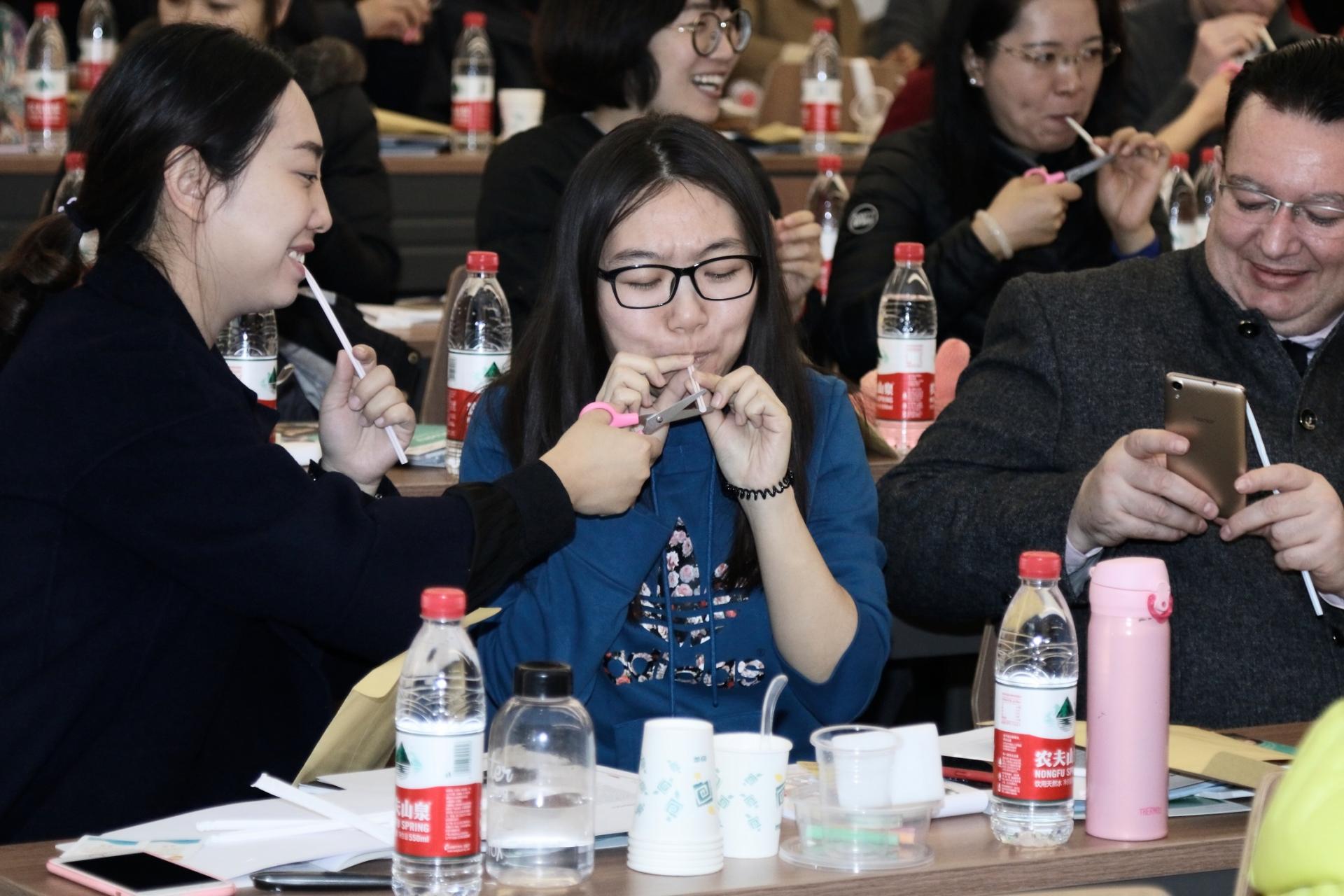
Teachers make great effort for a perfect science class.
For science classes at Kaiwen Academy (Haidian), teachers are no longer a rigid imparter of knowledge. Rather, they are actively guiding students to understand the world through the eyes of science. Teachers teach students how to observe things, ask questions, and independently resolve problems. Students are encouraged to use tools to answer their questions themselves. This discovery process will stimulate the children’s interest and help them acquire critical thinking skills, so that they can become creative scientists in the future.
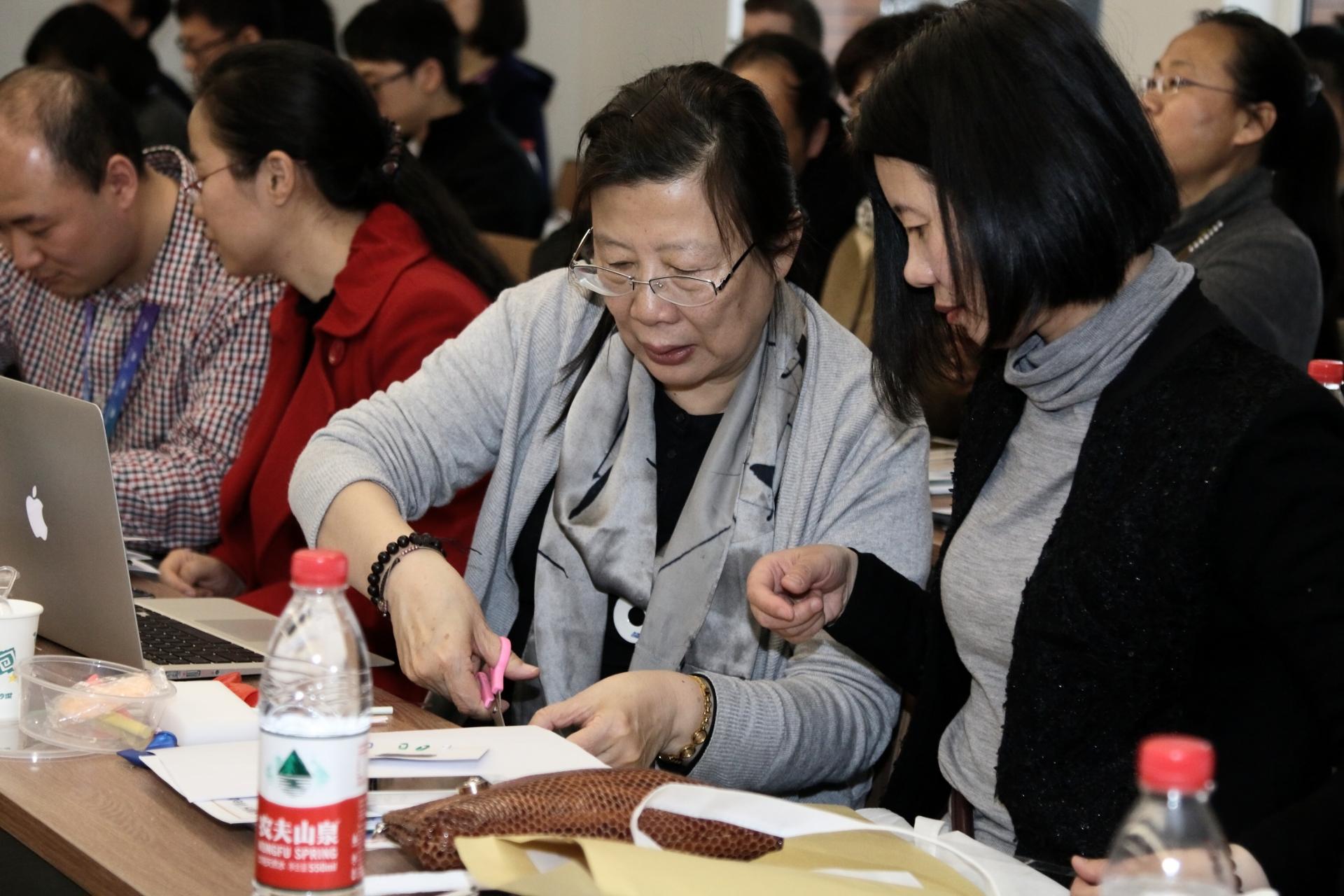
Teachers actively participate in interesting scientific inquiry activities.
This seminar has given the teachers some new perspectives on teaching. It updated their curriculum concepts, and will enable them to use the STEM education method in their future teaching plans. It also will have a significant guiding effect for teachers to think deeply about the values of scientific teaching and the change to the future it might bring.
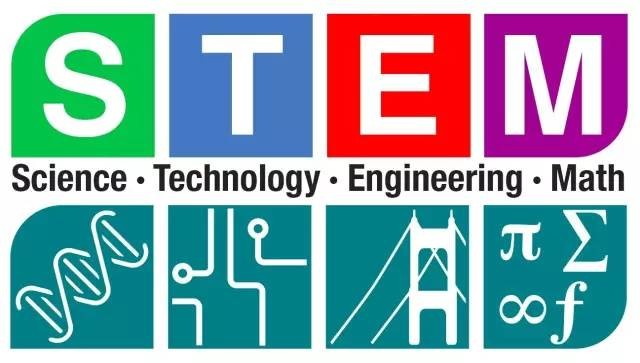
STEM
STEM is a new curriculum form that integrates Science, Technology, Engineering, and Mathematics. Its aim is to change book learning into a process of exploring the unknown world from different aspects. In this process, students are required to collect and analyze data, design, test, and improve a solution, and then compare notes with their partners. The method is for students to resolve real problems in real situations using scientific methods, knowledge, and engineering technologies. A specific situation is created to stimulate students’ interest in scientific inquiry, in which information technology, labor skills, and mathematical computing are used.
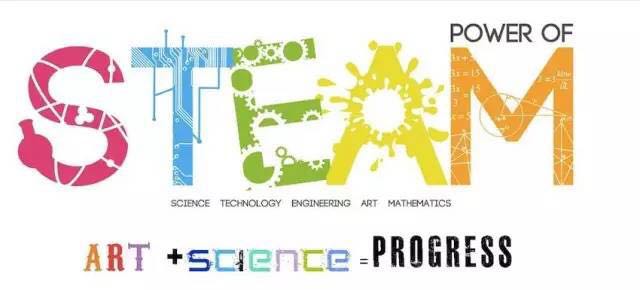
STEAM, designed to integrate STEM subjects and arts, is an education initiative first put forward by the U.S. government. STEAM education is no less important in the United States than quality-oriented education is in China. Most American primary and secondary schools have invested in this initiative. In response to the call of STEAM education, robots and 3D printers were adopted at schools; Mr. Obama joined the nationwide programming campaign and wrote his first code; plenty of high-tech products sprang up to help kids better learn science and mathematics. Integrating the academic disciplines of science, technology, engineering, arts, and mathematics breaks interdisciplinary boundaries.